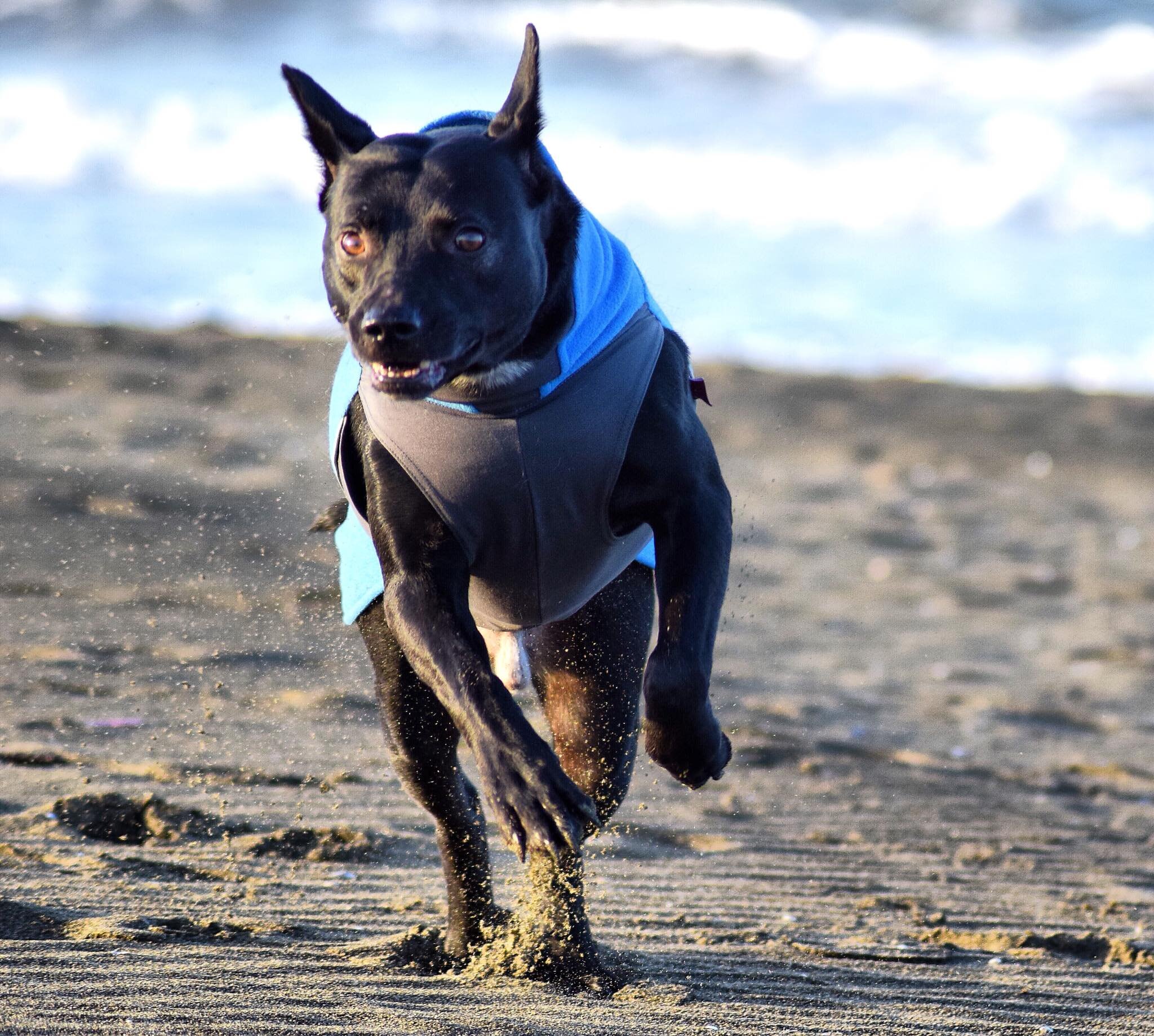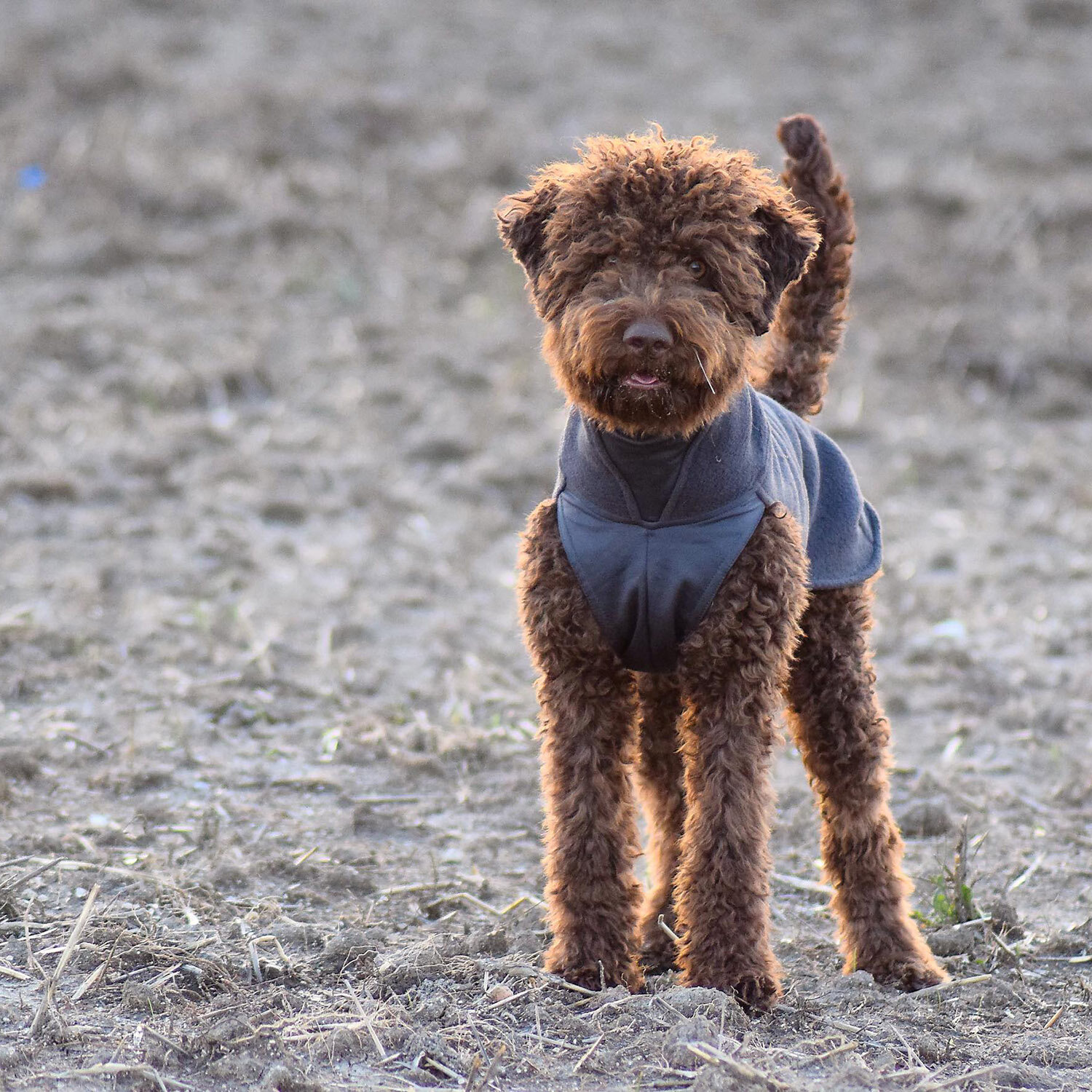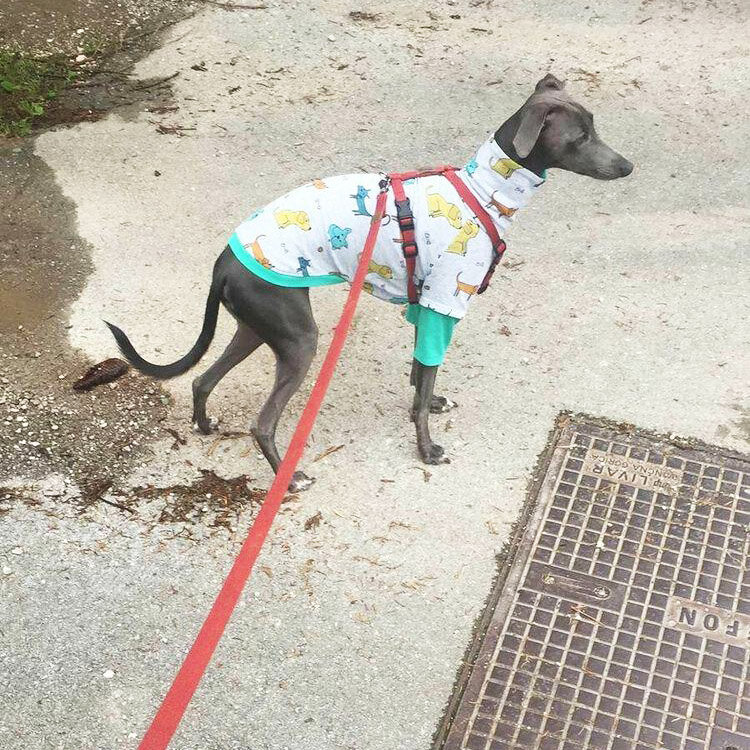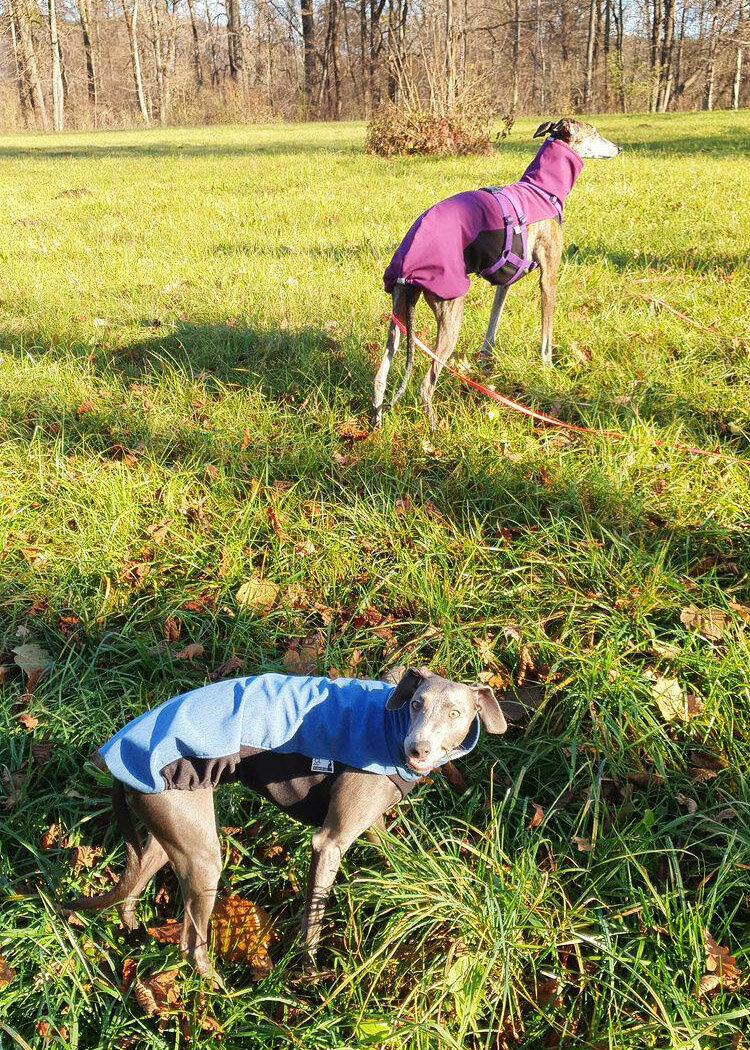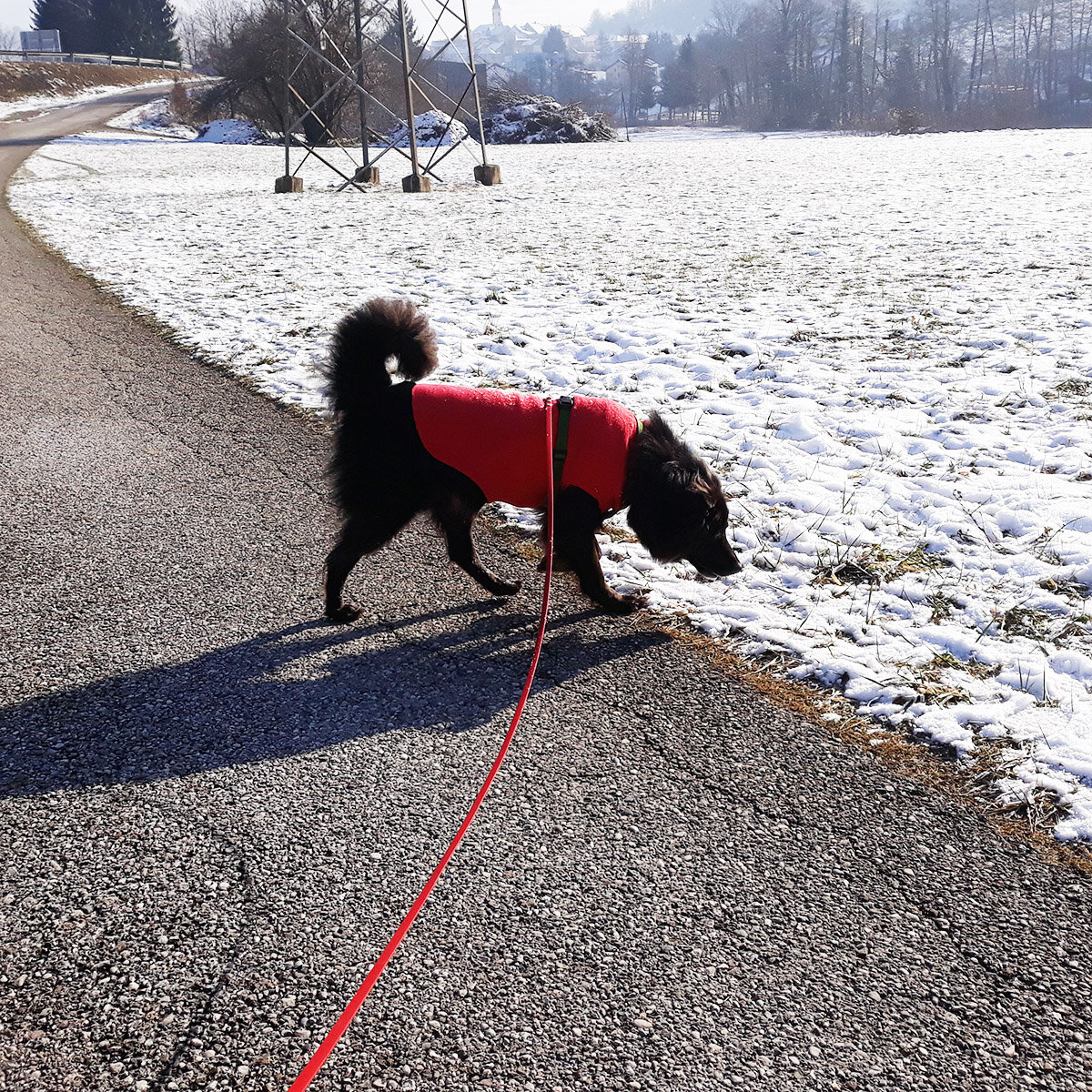Wearing a coat on Smiling Leash walks
In cold weather, many dogs need a coat to stay healthy and be comfortable on their walks.
If you are unsure whether your furry friend needs one, here are some things to consider:
WEATHER
This one is a no-brainer. There is no one-size-fits-all rule, though. Some dogs need a coat at +5 degrees Celsius, others only need it at -5 or lower. However, the temperature is not the only thing to take into account - wind is also important, and so is snow or rain. If it is especially windy, a dog may need a coat even if the temperature is not that low.
BREED
Certain breeds originate from warm, dry climates and these will likely need a coat if you live in a colder place.
SIZE
Smaller dogs lose heat more quickly, so a chihuahua will most probably need a coat in winter.
HAIR AND BODY TYPE
Some dogs have very little body fat and they will more likely need a coat. The same goes for dogs with a very short or thin coat and those without an undercoat.
AGE
Both temperature control and the immune system are still developing in puppies. A puppy may need a coat even if an adult dog of the same breed or type would not need one in the same conditions. The same goes for senior dogs, which brings us to the next point.
HEALTH
Even if you have a super fluffy double-coated dog whose breed originates from a cold climate, she might still need a coat due to various health reasons. These may include urinary or kidney issues, heart problems, thyroid disease, muscle issues, arthritis and so on. Your veterinarian can advise you about the use a coat in colder weather.
Nano wearing a warm coat
!! ALL COATS ARE NOT CREATED EQUAL !!
When choosing a coat for your dog, think function over fashion. Good coats:
Do not hinder movement, flap or make noise. Avoid unnecessary accessories like hoods and decoration.
Cover the belly - here, the fur is usually thin and the belly is close to the cold ground, so go for a coat that covers as much as possible without interfering with movement or peeing.
Cover the joints as much as possible - especially the shoulder area, possibly also the hips.
Do not hold moisture between layers.
Have zippers and fastenings that hair cannot get stuck in.
Are easy to wash and maintain. To find out more about why dogs need coats and how to choose one, we recommend this post by Sonja Hoegen of Dogcom: Should your dog wear a coat in winter
Big thanks to Petra, Blaž and Federica who contributed pictures of their dogs in coats!


